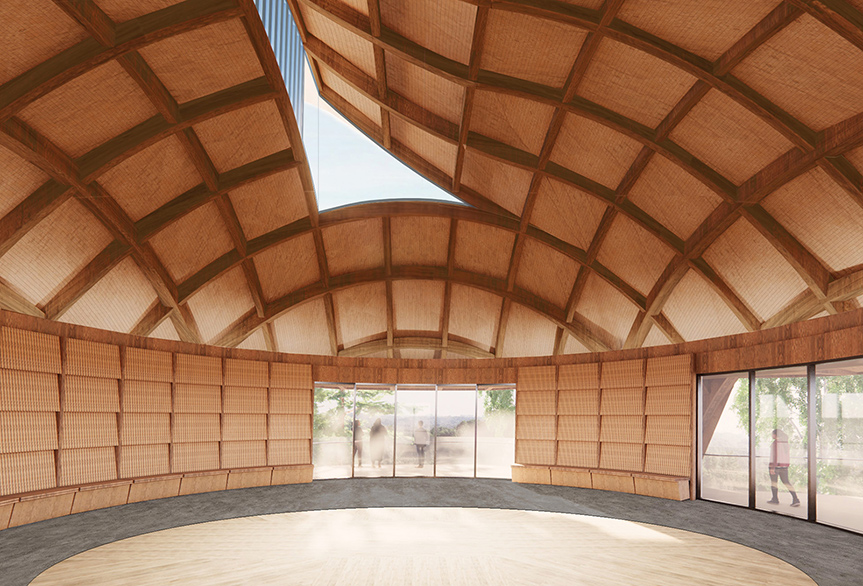A traditional winter wigwam is providing the inspiration for the design of a new Indigenous House at U of T Scarborough.
Once completed, the space will offer a place in the eastern Toronto region to gather and learn about Indigenous history, culture and ways of knowing.
Kelly Crawford, the assistant director, Indigenous initiatives, at U of T Scarborough, says the building is being conceived as a living entity – not just a physical structure with a roof, walls and rooms. “It’s alive in the sense that it embodies Indigenous knowledge, and we are respectful of honouring this not only during its creation, but in the programs and activities that will take place there,” she says.
Indigenous elders, knowledge keepers, and local Indigenous communities have suggested uses for the space, and have helped advise the architects on aspects of the building’s design.
Alfred Waugh, principal architect at Formline Architecture, the firm designing the structure along with LGA Architectural Partners, says the space will be an homage to local Indigenous culture.
“Indigenous ways of knowing place nature at the centre of its value system, so this building will flow directly into the surrounding environment,” says Waugh, a member of the Fond du Lac Denesuline Nation of Saskatchewan.

The building’s design is inspired by a traditional winter wigwam. Fresh air will be drawn from outside the building and pass through a series of underground tubes to help cool the space in summer and warm it in winter. Inside, a large circular gathering room at one end will open onto an observation deck overlooking a garden of birch trees and native plants with cultural significance for local Indigenous communities. Heat sensors will replace smoke detectors to permit the practice of smudging – a cultural practice involving the burning of sweetgrass – throughout the structure.
The building, which will include a mix of academic and social spaces, will be located on a gradually sloping piece of land with a view of the surrounding Highland Creek ravine.
Importantly, it will also create a place for students, staff and faculty, as well as the local community, to gather. “Traditionally, spaces like this didn’t exist within universities,” says Crawford. “Indigenous House will help make U of T Scarborough more inclusive for everyone.”







No Responses to “ Inspired by a Wigwam, and Open to All ”
Aaniin. I am a 1977 graduate of the University of Toronto. My time at the university was a trip into the world of Euro-Canadian culture, history and law. I did not have many fellow "Indian" students to make the journey with me. My language and worldview is pre-Columbus, so it was hard for me to articulate my experience to my professors and non-Indian classmates. Today, the academic community is coming to understand that our ways of knowing are unique to this land. Indigenous House, as a community meeting place, will give us an opportunity to share our solutions and gifts with other perspectives who now occupy Turtle Island.